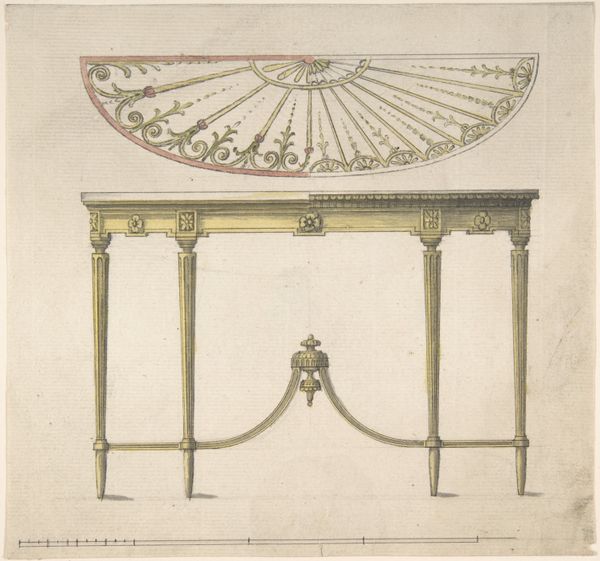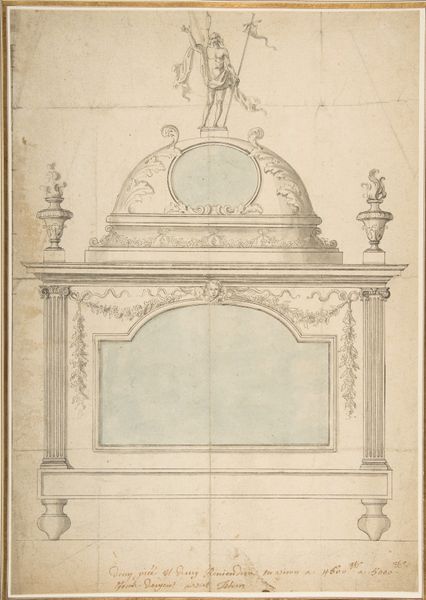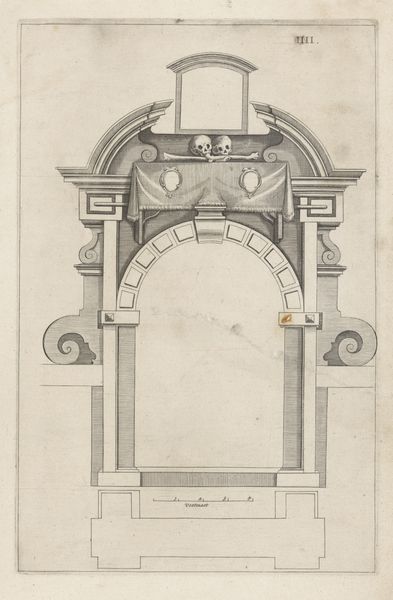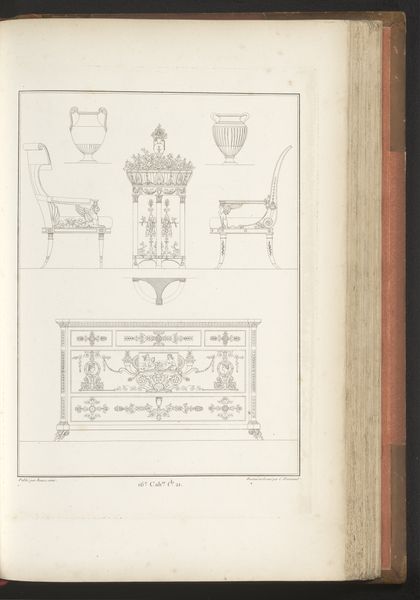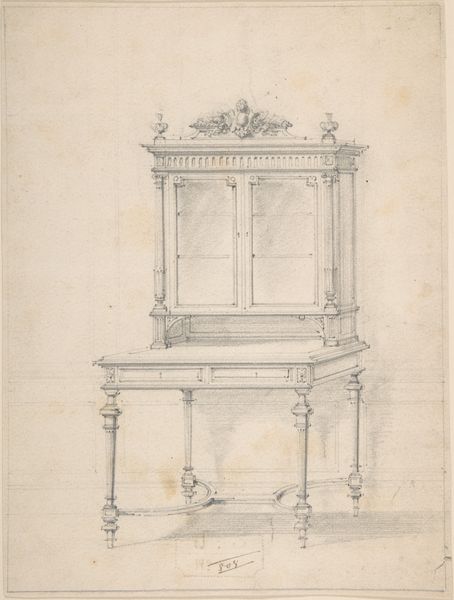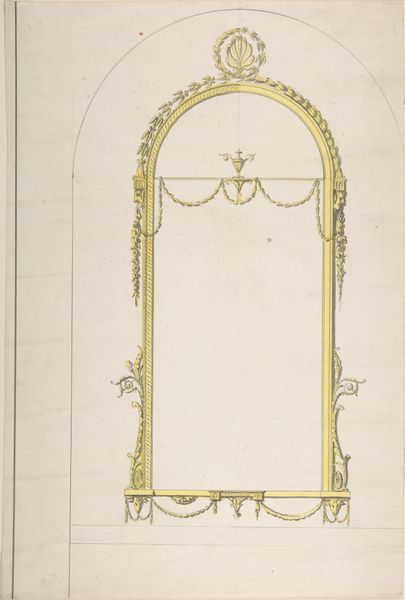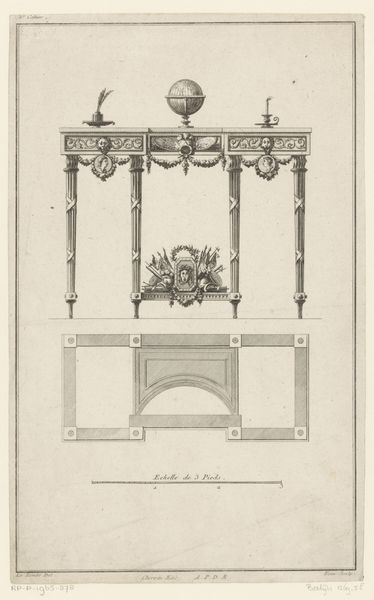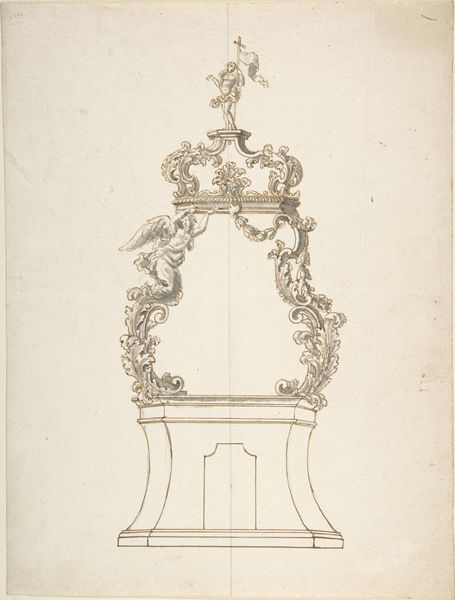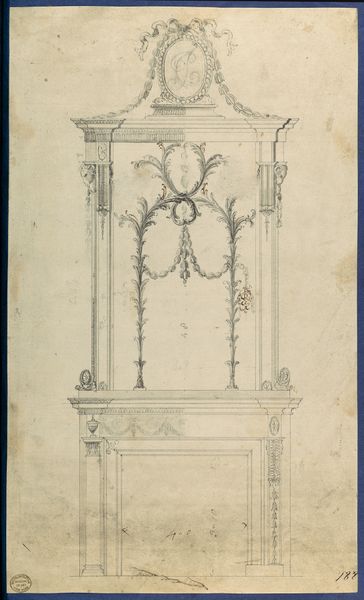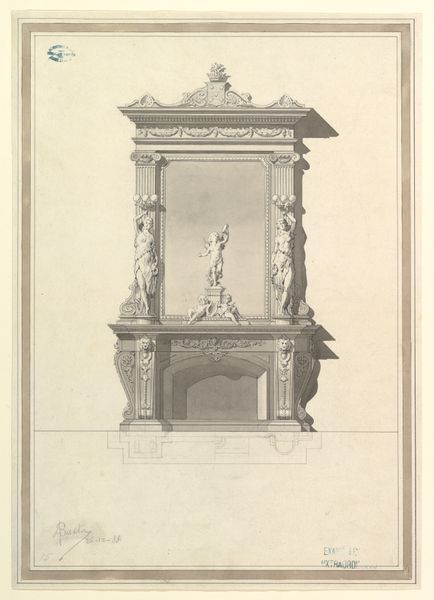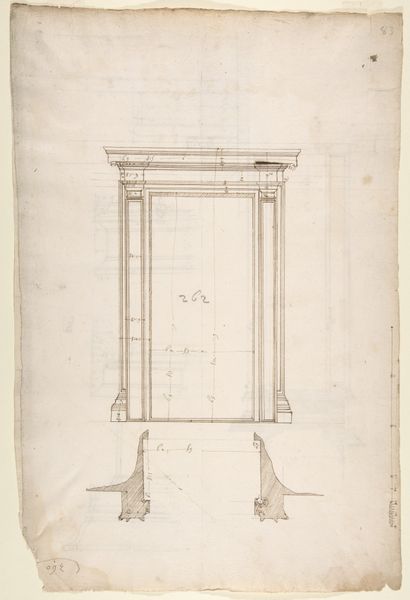
drawing, print, watercolor, pencil, architecture
#
drawing
#
table
#
neoclacissism
# print
#
watercolor
#
pencil
#
decorative-art
#
architecture
Dimensions: sheet: 10 3/4 x 8 7/8 in. (27.3 x 22.5 cm)
Copyright: Public Domain
Editor: Here we have Robert Adam's "Design for a Console Table," created sometime between 1750 and 1800, using pencil, pen, watercolor, and print. The detail is exquisite, yet there's a utilitarian purpose at its core. How should we interpret this blending of art and function? Curator: Looking at this piece through a materialist lens, I see more than just a design. Consider the labor involved. The drawing itself is a form of production, reliant on access to specific tools—pencils, watercolor, paper. But it also speaks to a whole system of labor waiting to happen; crafting that table would necessitate woodworkers, carvers, gilders... all specialized trades contributing to the final product, within a clearly established social hierarchy. What does the materiality itself—the wood, the paint—tell us about the consumption habits of the elite during this period? Editor: So, beyond the aesthetic, we should consider the economic and social conditions required to produce such a piece? Curator: Precisely! And don’t forget about the context of Neoclassicism itself, which often looks back to idealized forms. The use of particular materials like mahogany, which could stand in for Roman and Grecian aesthetics was key, especially considering what those meant to elites. We must analyze the flow of materials, from their extraction to their final placement within a domestic setting. Editor: I see now that the beauty is just the surface. The drawing allows us a glimpse into production, class, and the flow of goods within that time period. It is not simply aesthetic, but rather tells a historical tale. Curator: Exactly! Next time you see something so beautiful, remember to examine the story of labor and resources that make it exist.
Comments
No comments
Be the first to comment and join the conversation on the ultimate creative platform.
